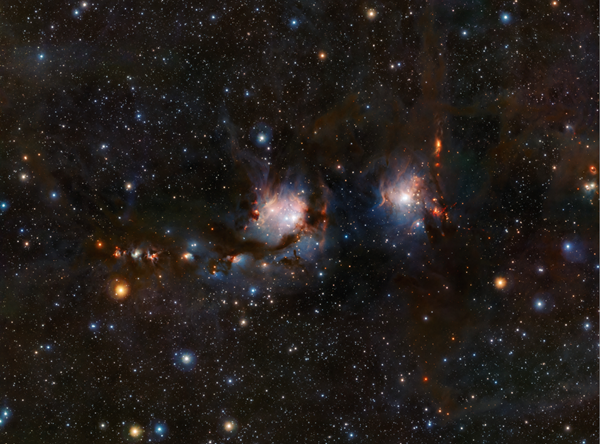Researchers have seen newborn red stars dimly shining from the cocoons of dust and gas out of which they formed.
Astronomers made this discovery using the European Southern Observatory’s Visible and Infrared Survey Telescope for Astronomy (VISTA), which studies the near-infrared part of the spectrum.
Fortunately, dust does not block near-infrared radiation as it does visible light, so the telescope can image small, cool stars. VISTA, which uses a mirror 4.1 meters in diameter, is part of the Paranal Observatory located in the Atacama Desert in Chile.
The target was Messier 78 (M78), the sky’s brightest reflection nebula. Such objects, composed of dust and ultra-cold gas, eventually become star-forming regions. M78 lies some 1,600 light-years away in the constellation Orion the Hunter. The dust that reflection nebulae contain reflects and scatters visible light, especially short-wavelength light like blue, which gives these objects their characteristic color. The same phenomenon is responsible for a clear sky on Earth being blue.
The observations made with VISTA are valuable because they allow astronomers to see many stars that are just forming. Their red and yellow colors are the telltale signs shown in the image the telescope captured.
Some of these objects are T Tauri stars, which, despite their name, are not actually stars because their cores are not yet hot enough to sustain nuclear fusion, the energy producers for normal stars. If, indeed, the objects VISTA revealed have just formed, it will take tens of millions of years before their core reactors “turn on.”










